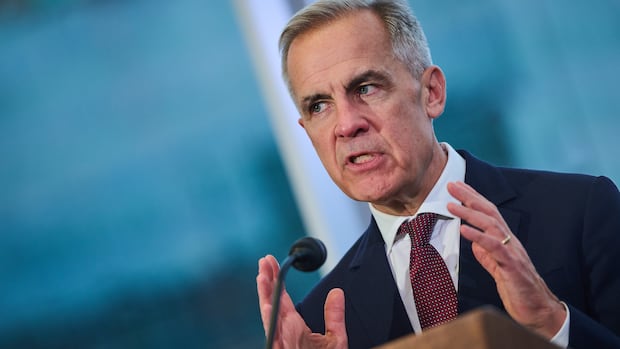Listen to this article
Estimated 4 minutes
The audio version of this article is generated by text-to-speech, a technology based on artificial intelligence.
Prime Minister Mark Carney announced Thursday seven more initiatives he’s recommending for fast-tracked approval by the government’s Major Projects Office (MPO) — and it includes multibillion-dollar energy and natural resources proposals that Ottawa hopes will deliver a jolt to the tariff-hit economy.
Carney said this latest round of projects will help the country become more economically self-sufficient in the face of U.S. aggression and a powerhouse player in high-in-demand critical minerals.
These seven initiatives, combined with the five projects Carney for approval in September, are worth a combined $116 billion to the Canadian economy, according to government figures.
Carney said each of the projects getting the green light are “transformational” and will help Canada realize its “full potential as an energy superpower” while creating new economic and trade corridors to steer the country away from the U.S.
“Many of Canada’s strengths — based on close trade ties with the U.S. — have become our vulnerabilities,” Carney said. “With the world changing rapidly, Canada must change our economic strategy dramatically.”
The MPO, created by Carney’s government this summer, will help shepherd these chosen projects across the finish line, said Dawn Farrell, the federal body’s president and CEO.
Farrell’s team will streamline the approvals process, help proponents with the necessary Indigenous consultations, work to attract investor dollars to get these projects through to completion and co-ordinate labour supply, among other tasks, which will vary from project to project, Farrell said.
Here are the six projects and one concept being referred to the MPO:
Looking into the projects
The transmission line in B.C. is designed to deliver low-cost, clean electricity and better telecommunications to communities along the West Coast. It also includes a possible B.C.-Yukon link, to connect that territory to the larger Canadian electricity grid.
Ksi Lisims LNG on Pearse Island, B.C., is an Indigenous-led $30-billion liquified natural gas (LNG) facility that will produce some 12 million tonnes of LNG per year to be shipped to clients mostly in Asia.
Canada Nickel’s Crawford Project in Timmins, Ont., is a new mine that will produce some 240,000 tonnes of ore per day, integral to making batteries and steel.
Nouveau Monde Graphite’s Matawinie Mine, in Saint-Michel-des-Saints, Que., is a $1.8-billion graphite mine that will provide important inputs for defence applications and battery supply chains.
Northcliff Resources’ Sisson Mine in Sisson Brook, N.B., will produce tungsten, a critical mineral essential for high-strength steel production, defence, and industrial applications.
The Iqaluit Nukkiksautiit Project will be Nunavut’s first 100 per cent Inuit-owned hydro energy project, meant to replace the territory’s reliance on 15 million litres of imported diesel each year, much of it from the U.S.
The Northwest Critical Conservation Corridor, meanwhile, is not a specific project but is nonetheless being referred to the MPO, because the government wants it to explore the corridor’s potential for economic development given the huge deposits of critical minerals in the area.
